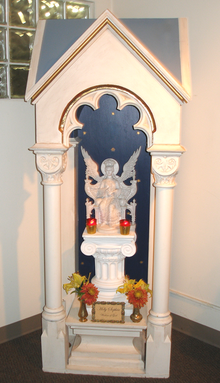
Back Moderne Gnostisisme Afrikaans Novognosticismus Czech Gnosticismo moderno Spanish Gnosticismo moderno Italian Neognostiek Dutch Neognosticismo Portuguese Neognóza Slovak
 |

Gnosticism in modern times (or Neo-Gnosticism) includes a variety of contemporary religious movements, stemming from Gnostic ideas and systems from ancient Roman society. Gnosticism is an ancient name for a variety of religious ideas and systems, originating in Jewish-Christian milieux in the first and second century CE.
The Mandaeans are an ancient Gnostic ethnoreligious group that have survived and are found today in Iran, Iraq and diaspora communities in North America, Western Europe and Australia.
The late 19th century saw the publication of popular sympathetic studies making use of recently rediscovered source materials. In this period there was also the revival of a Gnostic religious movement in France. The emergence of the Nag Hammadi library in 1945 greatly increased the amount of source material available. Its translation into English and other modern languages in 1977 resulted in a wide dissemination, and as a result had observable influence on several modern figures, and upon modern Western culture in general. This article attempts to summarize those modern figures and movements that have been influenced by Gnosticism, both prior and subsequent to the Nag Hammadi discovery.
A number of ecclesiastical bodies that identify as Gnostic have set up or re-founded since World War II as well, including the Ecclesia Gnostica, Johannite Church, Ecclesia Gnostica Catholica, the Ecclesia Gnostica Mysterioum, the Thomasine Church (not to be confused with the St. Thomas Christians of India), the Alexandrian Gnostic Church, the Ecclesia Gnostica Apostolica, the Gnostic Catholic Union, Ecclesia Valentinaris Antiqua, the Cathari Church of Wales, and the North American College of Gnostic Bishops.[1]
- ^ Taussig 2013, p. 532.